You are using an out of date browser. It may not display this or other websites correctly.
You should upgrade or use an alternative browser.
You should upgrade or use an alternative browser.
Depth/Crown Angle question
- Thread starter Kissmark
- Start date
- Status
- Not open for further replies. Please create a new topic or request for this thread to be opened.
WorkingHardforSmallRewards
Brilliant_Rock
- Joined
- Jun 5, 2007
- Messages
- 1,236
The depth should not be a problem, though I personally would look for one with a lesser depth just because I would want to get, mentally at least, a little more spread for my ct, since they are charging me for it. but thats not really a very solid way to think if you find a good diamond.
As to the cut combo, that has been a pretty HOT debate/discussion lately. Read the threads below. The real question about the cut of the diamonds you listed was not the crown angle of 35, but primarily about the pavilion angle. Also, though the end result was that 35/41 is a very nice cut, to be sure, if it is 34 instead it will perform slightly better. So if you want the absolute scientifically best cut out there in the round Brilliants, then 35/41.X is not it. Here is the discussion:
Note again, that the primary focus of this conversation is about Crown angles of 34 and Pavilion angles of 41, but in the discussion it is compared to crown angles of 35, and that difference and what it means to you is what you will want to focus on.
Initial thread, Focus on the 5th, 6th, and 8th post to begin with, then read it all
PAY close attention to how it changes in the 8th post.
The follow up with an interesting video, but this is for 34degrees crown angle, not 35
As to the cut combo, that has been a pretty HOT debate/discussion lately. Read the threads below. The real question about the cut of the diamonds you listed was not the crown angle of 35, but primarily about the pavilion angle. Also, though the end result was that 35/41 is a very nice cut, to be sure, if it is 34 instead it will perform slightly better. So if you want the absolute scientifically best cut out there in the round Brilliants, then 35/41.X is not it. Here is the discussion:
Note again, that the primary focus of this conversation is about Crown angles of 34 and Pavilion angles of 41, but in the discussion it is compared to crown angles of 35, and that difference and what it means to you is what you will want to focus on.
Initial thread, Focus on the 5th, 6th, and 8th post to begin with, then read it all
PAY close attention to how it changes in the 8th post.
The follow up with an interesting video, but this is for 34degrees crown angle, not 35
WorkingHardforSmallRewards
Brilliant_Rock
- Joined
- Jun 5, 2007
- Messages
- 1,236
Also, remember as DS points out in another thread. The 35/41 combo can be an AGS 0 ideal cut. We are only looking at two numbers, and obviously a diamond consist of much more than just two angles, or I have wasted a whole lot of time. So it could be, might not be. If Tif can''t provide enough info then I say hold out until you get a more consistently ideal stone, but if they can, then there shouldn''t be anything to worry about if you can manage to scrap up enough accurate information to piece the puzzle together.
whatmeworry
Brilliant_Rock
- Joined
- May 23, 2006
- Messages
- 1,095
Date: 7/11/2007 11:03:59 PM
Author: whatmeworry
Kissmark, can you link again the parameters of diamond you are looking at? You were looking at quite a few.
The one I''m looking at currently is the following (I didn''t post it before coz I''ve already posted a few and I thought this is similar to the others)
SHAPE
ROUND
CUT
BRILLIANT
MEASUREMENTS
6.93 - 6.94 x 4.32 mm
CARAT WEIGHT
1.27 CARATS
COLOR GRADE
F
FLUORESCENCE
NONE
PRESENCE
PRECISION OF CUT
EXCELLENT
SYMMETRY
EXCELLENT
POLISH
EXCELLENT
CLARITY GRADE
VS1
ENHANCEMENTS (BESIDES CUT/POLISHING)
NONE
CUT PROPORTIONS
TOTAL DEPTH PERCENTAGE
62.3%
GIRDLE THICKNESS
MEDIUM
TABLE SIZE PERCENTAGE
56%
GIRDLE FINISH
FACETED
CROWN ANGLE
35.3‹
CULET
NONE
PAVILION DEPTH PERCENTAGE
43.1%
When I asked about Pavilion angle, they said it''s about 40.8% (I dont think exactly, just gave me a rough number)
WorkingHardforSmallRewards
Brilliant_Rock
- Joined
- Jun 5, 2007
- Messages
- 1,236
Honestly, I''d ask them to look on the Tiffany Gemological Report (as opposed to the regular certs) for an exact pavilion angle. At a depth % of 43.1, I''ve seen PAs range from 40.7 even up to 41.1. Given the crown angle and girdle thickness you posted, I think 40.8 sounds about right, but you can never be too sure.
The crown angle you listed is a little steep for my tastes, but combined with a PA of 40.6 or 40.7, it would probably perform very well. I think 40.8 would be okay, too. I seriously doubt the average person can detect much difference once the stone is set anyway.
The crown angle you listed is a little steep for my tastes, but combined with a PA of 40.6 or 40.7, it would probably perform very well. I think 40.8 would be okay, too. I seriously doubt the average person can detect much difference once the stone is set anyway.
whatmeworry
Brilliant_Rock
- Joined
- May 23, 2006
- Messages
- 1,095
whatmeworry
Brilliant_Rock
- Joined
- May 23, 2006
- Messages
- 1,095
WorkingHardforSmallRewards
Brilliant_Rock
- Joined
- Jun 5, 2007
- Messages
- 1,236
Thats awesome. I would like to see some with varying pavilion angles rather than simply based on depth %. At least that way if the gemological report comes back different than he was told (and knowing sales reps at any store it is very possible) then he may not have to post up again to get that data. Maybe 40.8 40.9 and 40.1?
- Joined
- Jul 25, 2005
- Messages
- 13,375
Hahaha Julie thanks. I appreciate all the help, I think everyone on PS is obsessive about diamondsDate: 7/12/2007 12:31:42 AM
Author: JulieN
It''s fine.
Everyone in this thread (except wmw) is over obsessing.
WorkingHardforSmallRewards
Brilliant_Rock
- Joined
- Jun 5, 2007
- Messages
- 1,236
I know I am
 but its more of an academic and interesting matter to me really. I already made my purchase, though I might should stop studying in case I end up regretting it
but its more of an academic and interesting matter to me really. I already made my purchase, though I might should stop studying in case I end up regretting it
 . But also, if he is going to pay the premium for Tif and do all this work and research on numbers in addition I say the man needs to get a truly TRULY ideal cut, at the very least I say be POSITIVE it isn''t an AGS1 at that price, which would require knowing the pavilion angle along with everything else. but thats my opinion, and obviously contingent on him having not selected a particular combo that his eyes prefer.
. But also, if he is going to pay the premium for Tif and do all this work and research on numbers in addition I say the man needs to get a truly TRULY ideal cut, at the very least I say be POSITIVE it isn''t an AGS1 at that price, which would require knowing the pavilion angle along with everything else. but thats my opinion, and obviously contingent on him having not selected a particular combo that his eyes prefer.
Tif name + hours of extensive research, phone calls, etc= "top 1% cut" and best possible results of a scientific analysis of light performance. Not "top 5% cut" or anything else for all of the work going into this one.


Tif name + hours of extensive research, phone calls, etc= "top 1% cut" and best possible results of a scientific analysis of light performance. Not "top 5% cut" or anything else for all of the work going into this one.
whatmeworry
Brilliant_Rock
- Joined
- May 23, 2006
- Messages
- 1,095
JohnQuixote
Ideal_Rock
- Joined
- Sep 9, 2004
- Messages
- 5,212
Agreed. With no culet a 43.1% pavilion depth should be spot-on Tolkowsky''s 40.75 pavilion angle. Sounds beautiful and fiery.Date: 7/12/2007 12:31:42 AM
Author: JulieN
It''s fine.
Everyone in this thread (except wmw) is over obsessing.
Date: 7/12/2007 12:31:42 AM
Author: JulieN
It''s fine.
Everyone in this thread (except wmw) is over obsessing.
Ah, but isn''t that the price-scope way?

Seriously, though, get the gemological report. A few ticks in PA can make a noticeable, if not substantial difference under an ideal scope. Human eye? Probably not.
WorkingHardforSmallRewards
Brilliant_Rock
- Joined
- Jun 5, 2007
- Messages
- 1,236
Date: 7/12/2007 12:51:37 AM
Author: whatmeworry
WorkingHard,
What do you think of the pricescope diamond survey video that showed no strong preference between 40.6, 40.8 and 41.2 degrees?
Define TRULY ideal cut. What does top 1% of diamonds mean?
Well first I wanted to make it clear that I certainly don't mean to be causing any trouble nor do I have enough knowledge to draw any real conclusions myself on different cuts. I am more so just hoping to bring about questions to be asked that can help to find more information.
As to what do I consider top 1% I will put that at the end for those that don't want to read it.
Based on my very primitive understanding this diamond looks like it could be up there, but to be sure pavilion angles should be gotten and a little further analysis put into all of the numbers and what they really mean about the light properties. *I just read John's post though, and that is just about enough confidence for me (though I still say make sure)
Also, I don't know though you may, exactly how Tif measures the girdle? Thus with unknowns such as that out there I think its best to get ALL of the information at this point, and accept nothing less.
My intention in regards to my comments on the diamond is just to help him get an absolute best light performing diamond and to be fully aware of how it will perform in comparison to how others will perform. Unfortunately all I can really do is help to point out questions and make a few comments and hopefully get results from those with more experience than myself. In which case those opinions trump my own, to be sure, as that was really one of my primary objectives in participating in the first place.
In the end all I was really saying though was that as the pav. angle changes it may well introduce some light leakage and reduce light performance that probably won't be visible, but possibly could be depending on exactly what the angle was. Thus my goal was to pose questions and help him pose questions that would hopefully pring good people like yourself in to help make sure he gets a true AGS 0 FANTABULOUS top in the world in light performance diamond for all his money and effort. It looks like a winner for now though, for sure, but there are a lot of different things to consider.
As to the video, I think it is very interesting but not a whole lot more than that. there are alot of uncontrolled variables in it, alot of unknowns and a very small sample of data. It simply isn't enough to make any conclusions. Though I certainly love seeing things like this and it looks like something worth doing a more complete analysis of.
as to the top 1%
I put that in quotes for a reason, as that is one of the terms generally associated on PS with what I meant. First and foremost I mean that the light return analysis should have no noticeable issues with light leakage in any measurable way or in anyway way noticeable to a trained professional under various lighting conditions and that by anticipating how lightwaves will interact in accordance with the angles and symmetry of the facets there should be a very very high percentage of light return. As I said I think that if he is going to not only pay the Tif premium but also put in the research he should walk out of this with a diamond that has amongst the absolute best scientific results possible for light return/performance of any out there and that it is worth being nit-picky to ensure that happens considering all that has already gone into it.
junior35
Rough_Rock
- Joined
- Jun 26, 2007
- Messages
- 49
WorkingHardforSmallRewards
Brilliant_Rock
- Joined
- Jun 5, 2007
- Messages
- 1,236
yes I know, that is what I meant when I said to understand the properties of that light performance in relation to other diamonds performance
I just wasn't ready to reopen that can of worms so directly yet. I had requested them in a previous thread of his, which he then gave us and nobody commented on
 . I am betting its 55/80 though in accordance with the higher crown angle and the Tifs I have looked at, and I would also put a bit of money that the pav. angle is closer to 40.9 despite what john said
. I am betting its 55/80 though in accordance with the higher crown angle and the Tifs I have looked at, and I would also put a bit of money that the pav. angle is closer to 40.9 despite what john said
 (but I wouldn't ever actually bet against Mr. Q lol, that is all talk)
(but I wouldn't ever actually bet against Mr. Q lol, that is all talk)
I just wasn't ready to reopen that can of worms so directly yet. I had requested them in a previous thread of his, which he then gave us and nobody commented on


JohnQuixote
Ideal_Rock
- Joined
- Sep 9, 2004
- Messages
- 5,212
True that, though those numbers were not included in some systems pre 2005 (times have a-changed). Hopefully they'll be in normal ranges. Failing a scan, an ideal-scope image or even a photo with clear obstruction can be used to get a pretty good idea of lower halves & star %.Date: 7/12/2007 1:40:57 AM
Author: junior35
All but forgotten in all your assesments of light performance is star facet lengths as well as percentage length of bottom halves.You think it's as simple as crown and pavillion angles? Hah! If life were that simple.
By the way (for any who didn't know this): Crown % and crown angle don't have a strict relationship because table size varies. Since the pavilion does not have a table - and this one has no culet - we can judge pavilion angle very precisely only knowing pavilion %. 43.1 correlates to 40.75 degrees. Normal scan tolerance applies of course.

WorkingHardforSmallRewards
Brilliant_Rock
- Joined
- Jun 5, 2007
- Messages
- 1,236
John Q-
"Crown % and crown angle don't have a strict relationship because table size varies. Since the pavilion does not have a table - and this one has no culet - we can judge pavilion angle very precisely only knowing pavilion %. 43.1 correlates to 40.75 degrees. Normal scan tolerance applies of course. "
Remember I am new to all of this. You can say that with 100% certainty then? no unknowns left to cast any doubt on the pav. angle? for instance, couldn't the culet of "none" in fact be a one of a very small range of % which by themselves are irrelevant in regards to culet size but might affect the degree ever so slightly?
(I am getting tired now at 2am as well, can't think things through real well...)
"Crown % and crown angle don't have a strict relationship because table size varies. Since the pavilion does not have a table - and this one has no culet - we can judge pavilion angle very precisely only knowing pavilion %. 43.1 correlates to 40.75 degrees. Normal scan tolerance applies of course. "
Remember I am new to all of this. You can say that with 100% certainty then? no unknowns left to cast any doubt on the pav. angle? for instance, couldn't the culet of "none" in fact be a one of a very small range of % which by themselves are irrelevant in regards to culet size but might affect the degree ever so slightly?
(I am getting tired now at 2am as well, can't think things through real well...)
John what would be the normal ranges for star facet length and lower bottom %? I will ask the vendor for more details. ThanksDate: 7/12/2007 1:51:59 AM
Author: JohnQuixote
True that, though those numbers were not included in some systems pre 2005 (times have a-changed). Hopefully they''ll be in normal ranges. Failing a scan, an ideal-scope image or even a photo with clear obstruction can be used to get a pretty good idea of lower halves & star %.
By the way (for any who didn''t know this): Crown % and crown angle don''t have a strict relationship because table size varies. Since the pavilion does not have a table - and this one has no culet - we can judge pavilion angle very precisely only knowing pavilion %. 43.1 correlates to 40.75 degrees. Normal scan tolerance applies of course.
JohnQuixote
Ideal_Rock
- Joined
- Sep 9, 2004
- Messages
- 5,212
Pavilion depth % is the distance from the bottom of the girdle plane to the culet (expressed as a percentage of avg girdle diameter). You can think of avg pavilion angle as two lines meeting at the bottom of the pavilion in a V. When you make the V shallower or steeper the pavilion depth % shifts proportionately.Date: 7/12/2007 1:57:35 AM
Author: WorkingHardforSmallRewards
John Q-
'Crown % and crown angle don't have a strict relationship because table size varies. Since the pavilion does not have a table - and this one has no culet - we can judge pavilion angle very precisely only knowing pavilion %. 43.1 correlates to 40.75 degrees. Normal scan tolerance applies of course. '
Remember I am new to all of this. You can say that with 100% certainty then? no unknowns left to cast any doubt on the pav. angle? for instance, couldn't the culet of 'none' in fact be a one of a very small range of % which by themselves are irrelevant in regards to culet size but might affect the degree ever so slightly?
(I am getting tired now at 2am as well, can't think things through real well...)
A culet does introduce variability (like the table does with the crown) because now you've cropped the bottom of the V and the depth % is less to some degree. All of this is within normal scan tolerances of course...so 'ever so slightly' is certainly possible with non-contact scanners...but "no culet" (or "pointed") is usually pretty reliable; the pointer test a diamond grader does in darkfield illumination is very telling.
I didn't realize it was so late! Caramba.
JohnQuixote
Ideal_Rock
- Joined
- Sep 9, 2004
- Messages
- 5,212
GIA gives EX for lower halves between 70-85%. For this combo 75-80% is a nice bullseye. Stars get EX between 45-65%. While not as critical as the lower halves, complimentary numbers for that LH range would be 50-60%.Date: 7/12/2007 2:05:15 AM
Author: Kissmark
John what would be the normal ranges for star facet length and lower bottom %? I will ask the vendor for more details. Thanks
Sorry to dig up this old thread again but just got answers from the lab, the start length is 55%, and lower half is 80%. seems good according to what John to me. Looks like this will be the one for me!Date: 7/12/2007 2:25:21 AM
Author: JohnQuixote
GIA gives EX for lower halves between 70-85%. For this combo 75-80% is a nice bullseye. Stars get EX between 45-65%. While not as critical as the lower halves, complimentary numbers for that LH range would be 50-60%.Date: 7/12/2007 2:05:15 AM
Author: Kissmark
John what would be the normal ranges for star facet length and lower bottom %? I will ask the vendor for more details. Thanks
- Status
- Not open for further replies. Please create a new topic or request for this thread to be opened.
Share:
How Are Diamonds Made? Natural vs Lab-Created Explained How Are Diamonds Made? Natural vs Lab-Created Explained - 08/05
How Are Diamonds Made? Natural vs Lab-Created Explained - 08/05

Top Wedding Ring Brands for Every Style and Budget
Top Wedding Ring Brands for Every Style and Budget - 08/05
Where to Buy Lab Grown Diamonds: Best Places Compared
Where to Buy Lab Grown Diamonds: Best Places Compared - 08/05

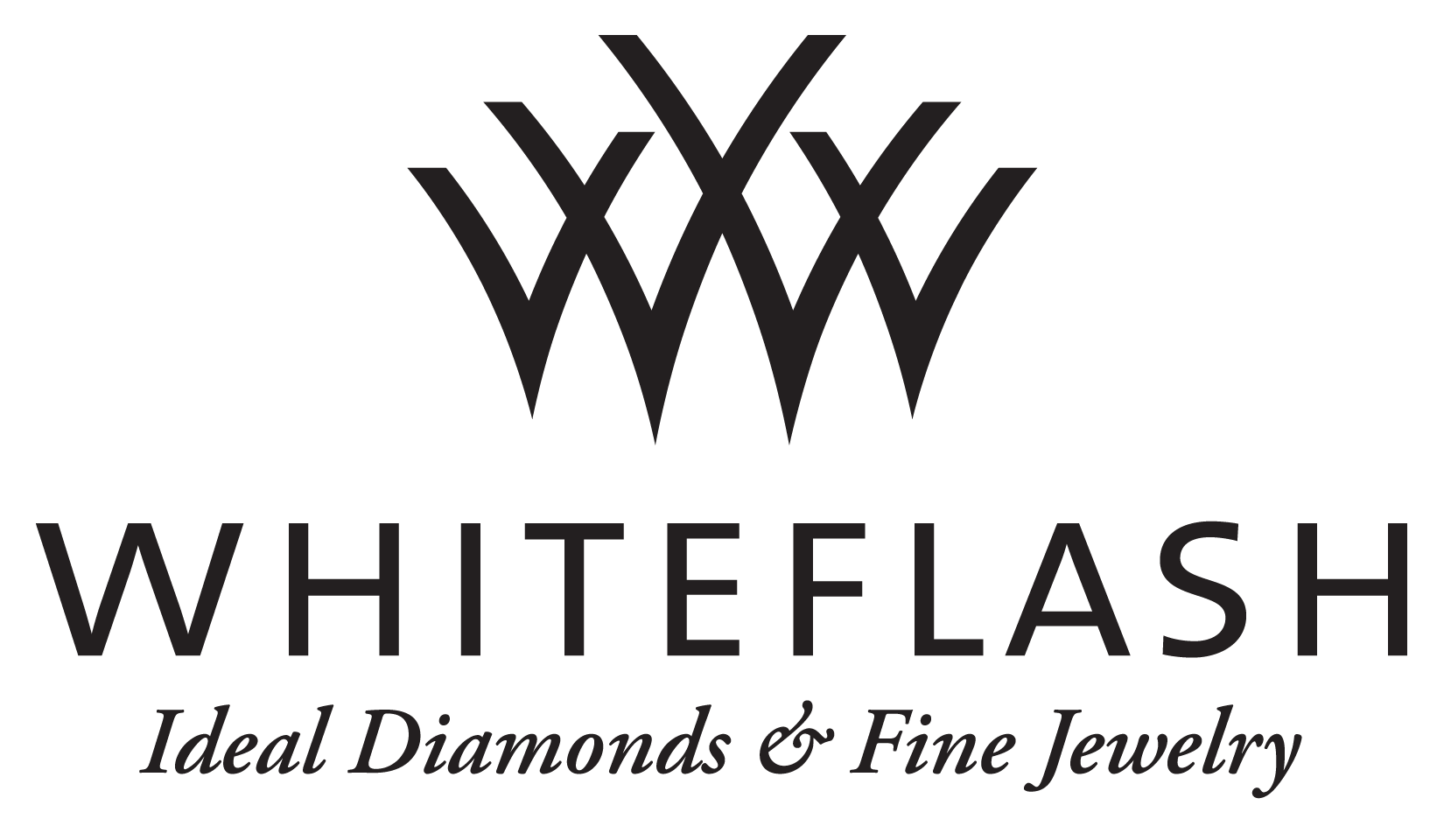
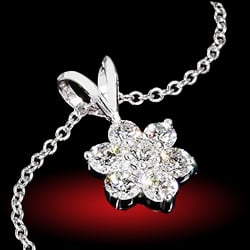
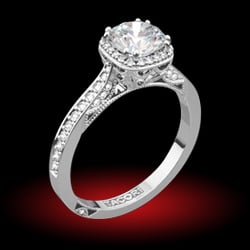
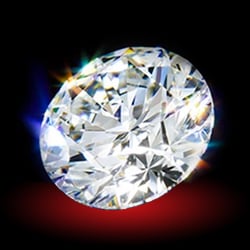
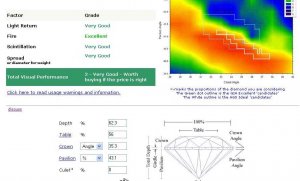
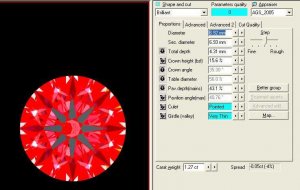

300x240.png)